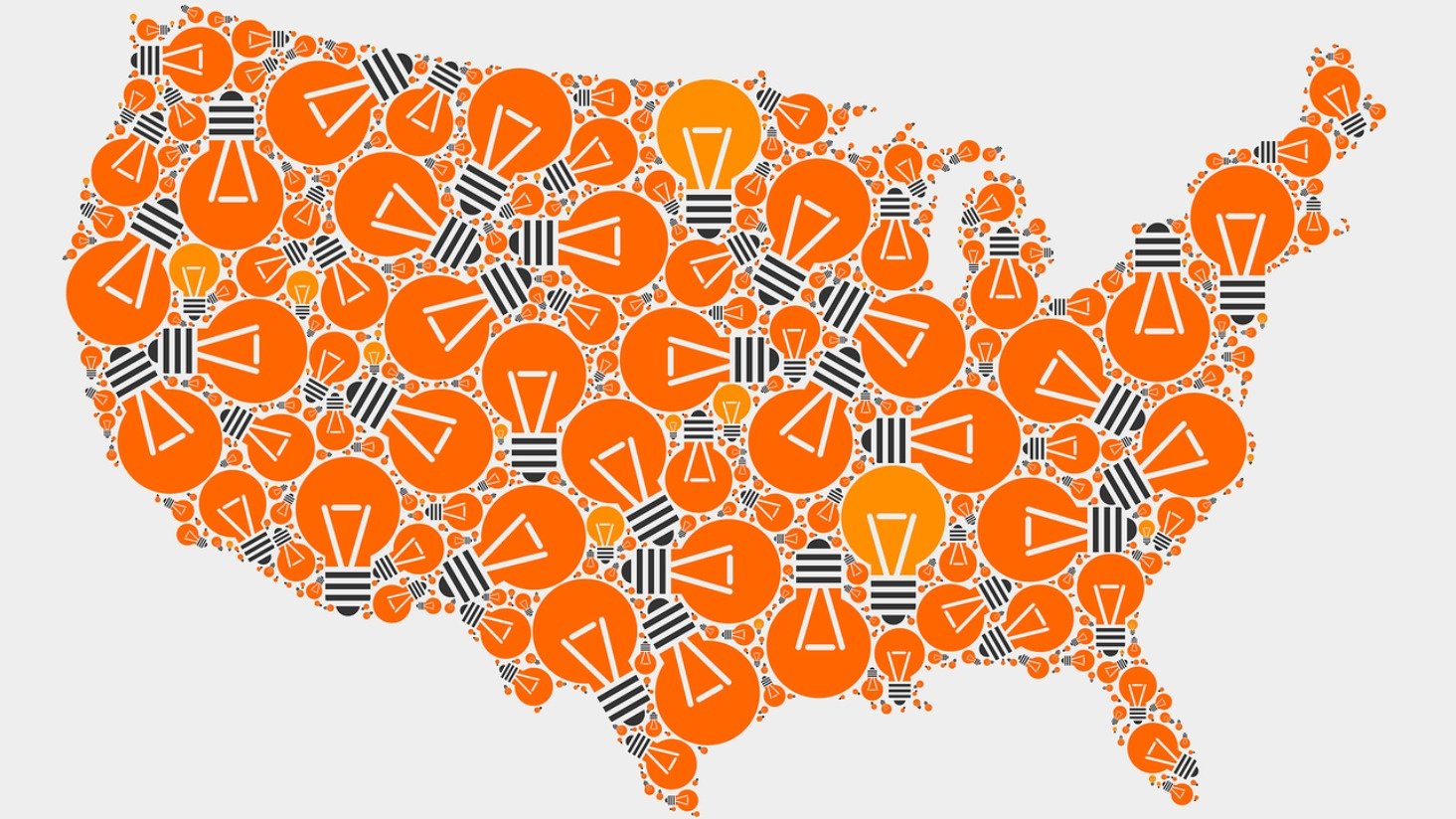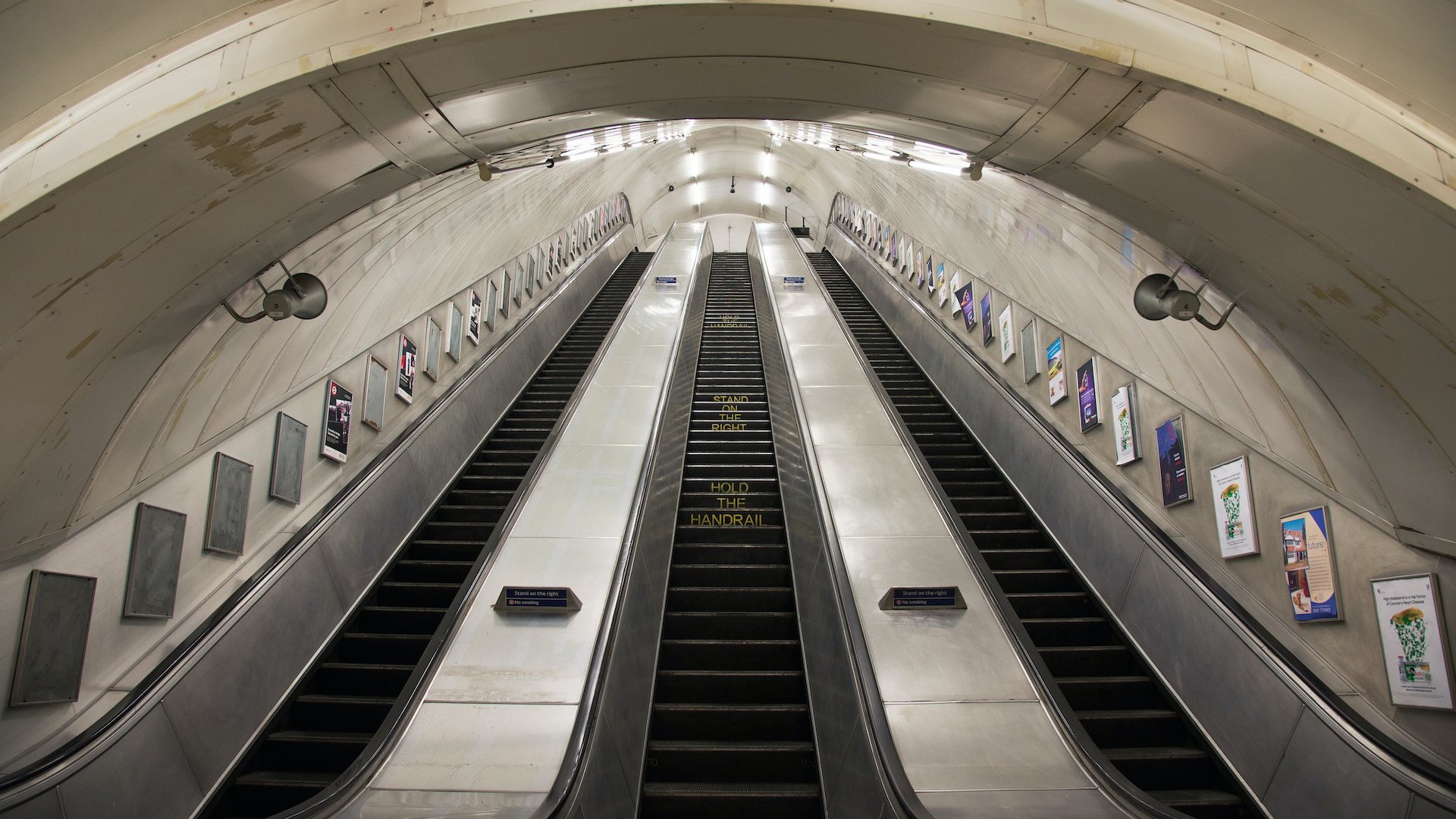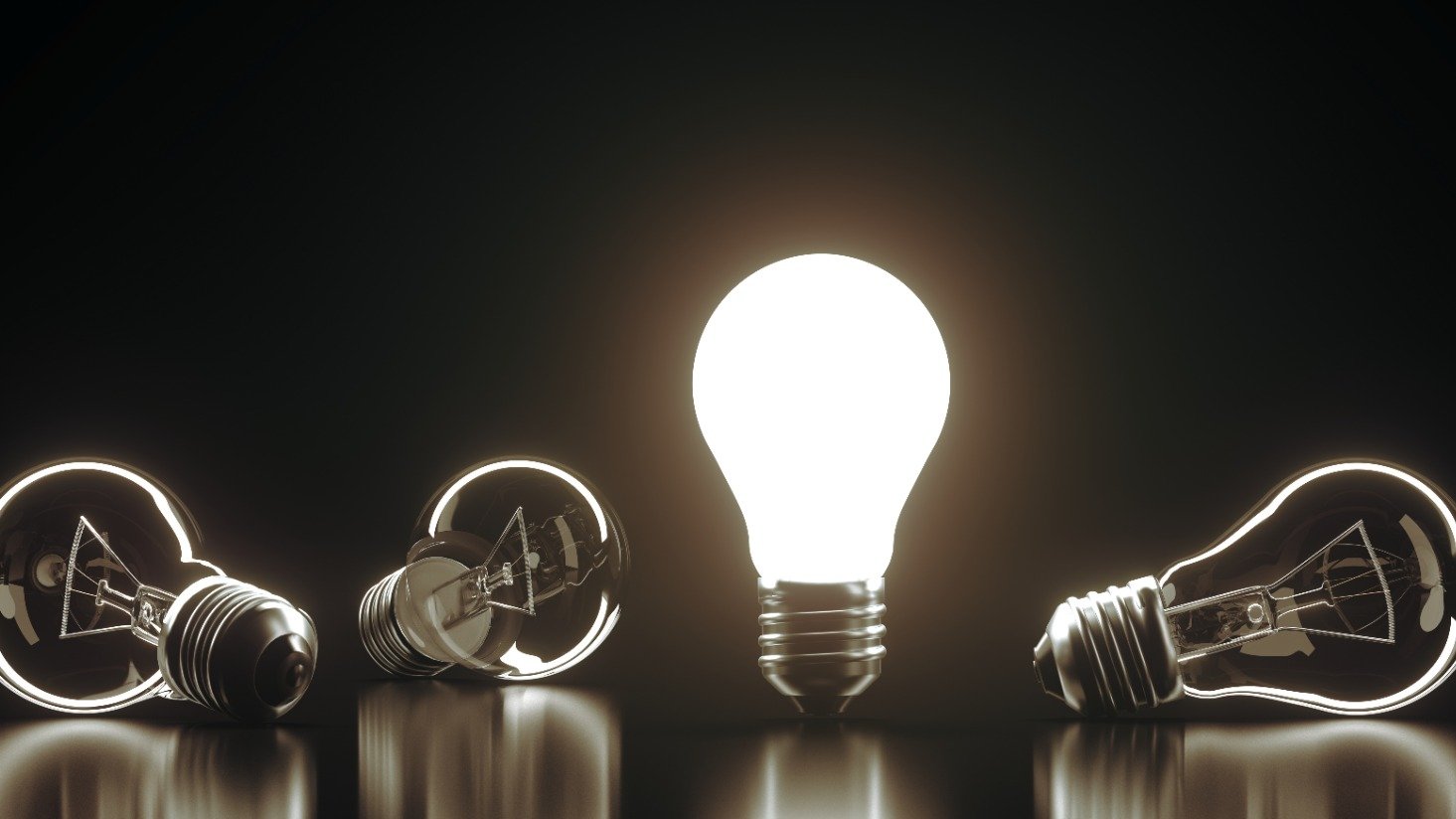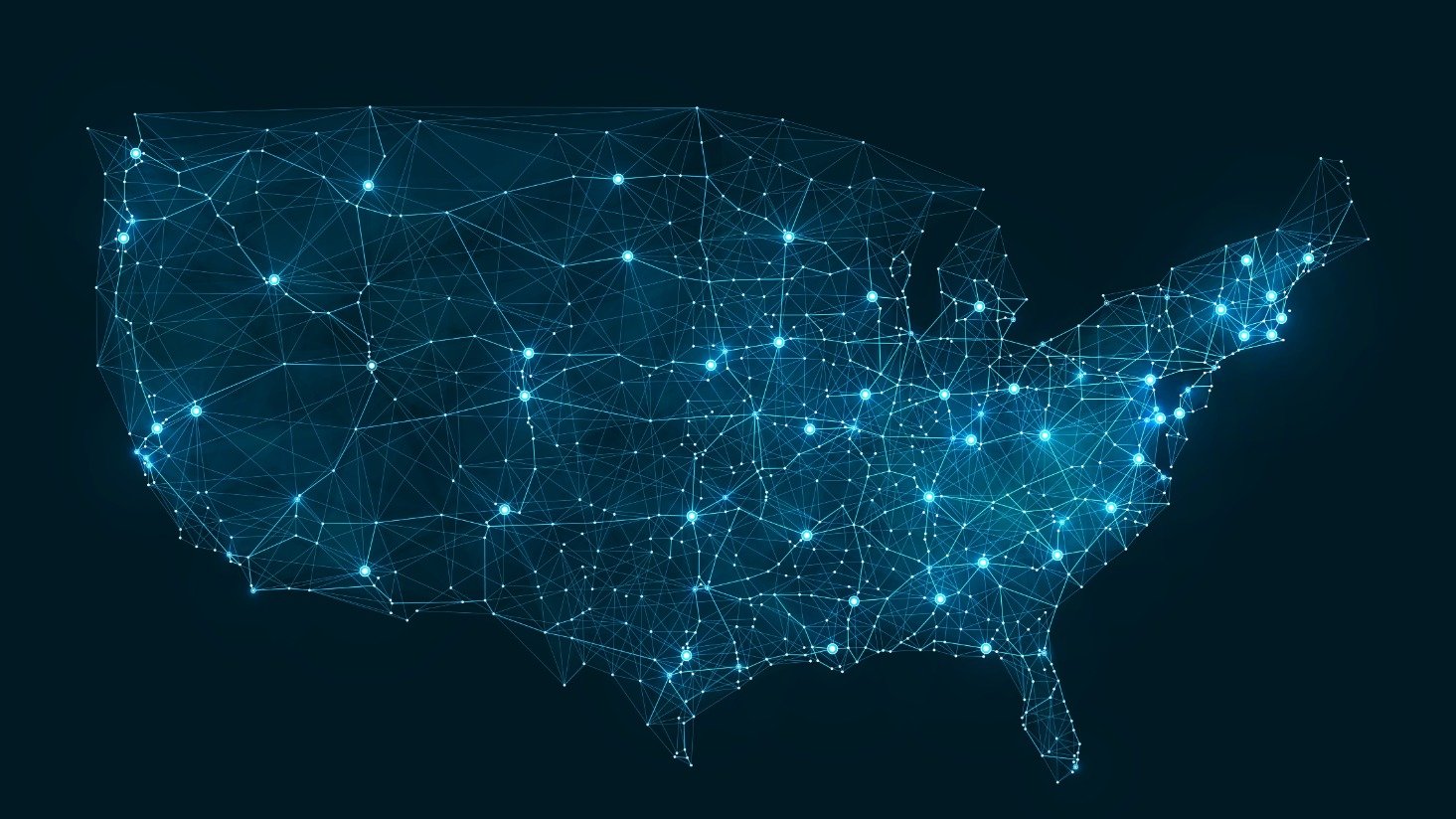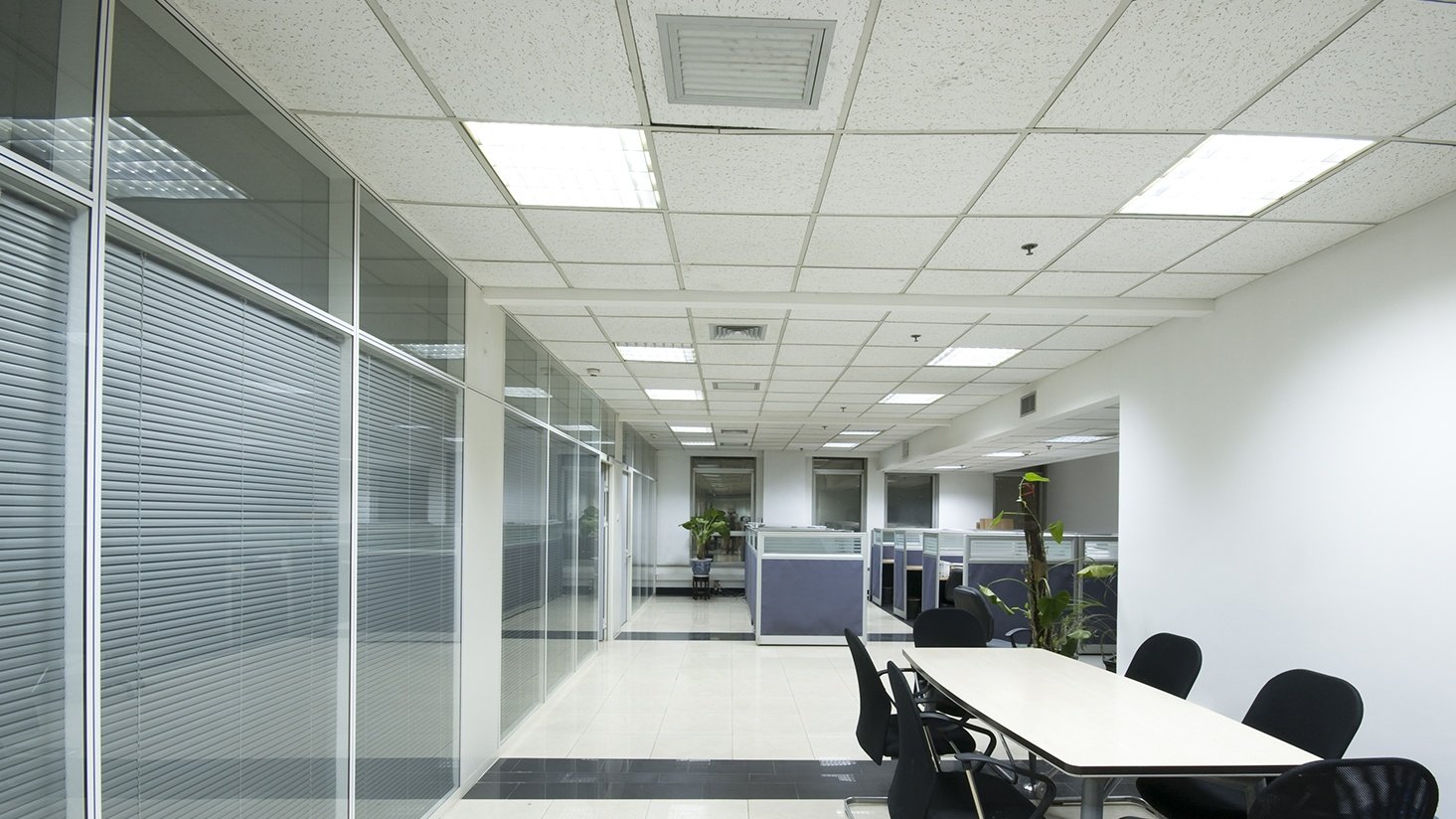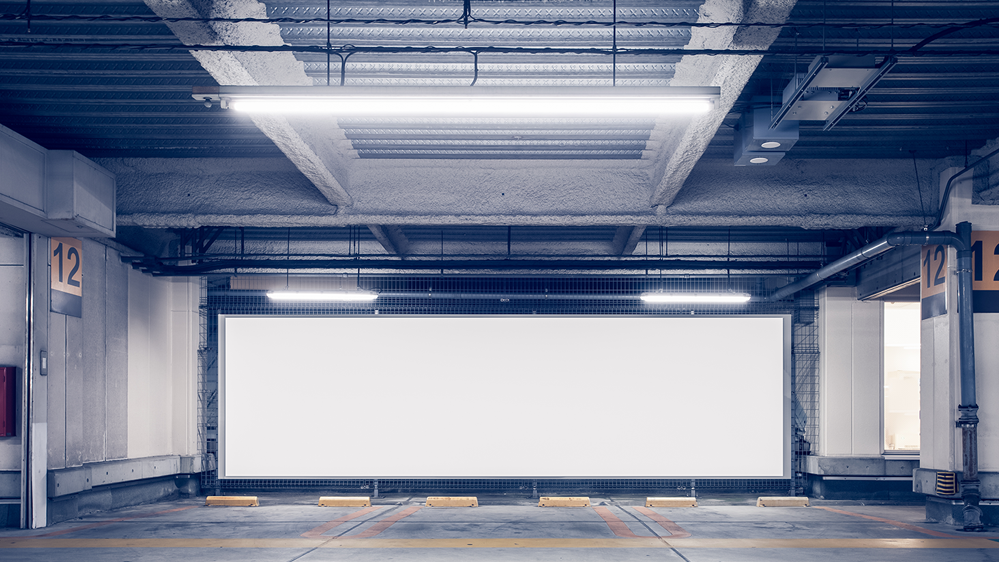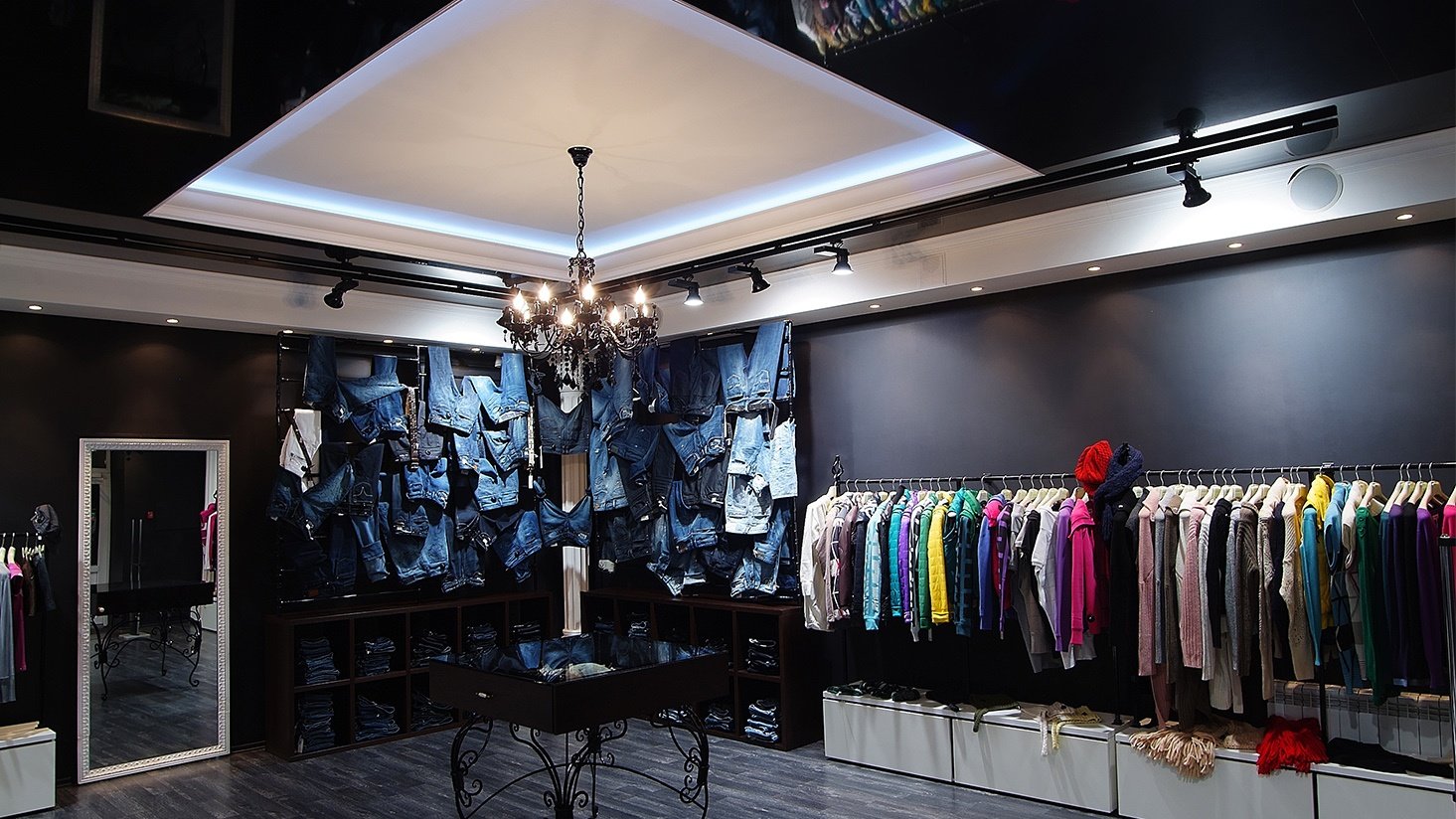A state by state look at light bulb bans [Interactive map]

If you walk into a store, you won't find any of the traditional incandescent light bulbs originally patented by Thomas Edison. A federal law eliminated the sale of most incandescent and halogen lighting products.
But that's just the beginning of changes in the lighting industry. Beyond the federal regulations, some states already have additional lighting requirements in place — eliminating even more lighting products.
Among the different laws in different states, there is not much consistency over what can and cannot be sold. That can lead to a lot of confusion if you are looking for certain products or if you have businesses or franchises in several different states. Our goal is to help you understand the law in each state so you can make the right buying decision.
Click here to use the interactive map.
A quick recap of federal requirements for lighting products
In May 2022, the Department of Energy finalized two rules:
- New definitions of General Service Lamps (GSLs) and General Service Incandescent Lamps (GSILs). GSLs include GSILs (as well as LED and CFL).
- A requirement for GSLs and GSILs to meet or exceed 45 lumens per watt. All CFL and LED lamps are higher than 45 lpw and will continue to be sold.
Simply put, light bulbs commonly used in homes and some commercial buildings must now be much more energy efficient. Most incandescent and halogen products use most of their energy producing heat and cannot meet the new requirements (with exceptions, of course).
These new definitions are now in effect, which is why you will no longer find many incandescent and halogen products on store shelves.
But what about additional state requirements? Some states are placing additional restrictions on fluorescent products. The table below includes a high-level summary of the states that are either considering or enforcing other restrictions on lighting products. Click on the name of the state or use the interactive map that follows for more detail on the existing and proposed regulations.
State-level Restriction Summary
| State | GSL | CFL | Linear Fluorescent |
| California | ⛔ Active CFL and LED requirements with Title 20 | ⛔ Self-ballasted (Screw and bayonet-base) active ⚠️ Pin-base begins Jan 1, 2025 |
⚠️ Begins Jan 1, 2025 |
| Colorado | No state-specific requirements | ⚠️ Begins Jan 1, 2025 | ⛔ High-CRI ban active ⚠️ All others begins Jan 1, 2025 |
| Hawaii | No state-specific requirements | ⚠️ Begins Jan 1, 2025 | ⛔ High-CRI ban active ⚠️ All others begins Jan 1, 2025 |
| Maine | Active requirements above Federal standard | ⚠️ Begins Jan 1, 2026 | ⚠️ Begins Jan 1, 2026 |
| Maryland | No state-specific requirements | ⚠️ Pending bill | ⚠️ High-CRI Pending MEA ⚠️ All others pending bill |
| Massachusetts | ⛔ Active requirements above Federal standard | No state-specific requirements | ⛔ High-CRI ban active |
| Nevada | No state-specific requirements | No state-specific requirements | ⛔ High-CRI ban active |
| New Jersey | ⛔ Active requirements above Federal standard | No state-specific requirements | ⛔ High-CRI ban active |
| Oregon | No state-specific requirements | ⛔ Self-ballasted (Screw and bayonet-base) active ⚠️ Pin-base begins Jan 1, 2025 |
⛔ High-CRI ban active ⚠️ All others begins Jan 1, 2025 |
| Rhode Island | No state-specific requirements | ⛔ Self-ballasted (Screw and bayonet-base) active ⚠️ Pin-base begins Jan 1, 2025 |
⚠️ Begins Jan 1, 2025 |
| Vermont | No state-specific requirements | ⛔ CFL ban active (all types) | ⛔ Linear fluorescent ban active |
| Washington | No state-specific requirements | No state-specific requirements | ⛔ High-CRI ban active |
| Washington DC | ⛔ Active requirements above Federal standard | No state-specific requirements | ⛔ High-CRI ban active |
*Information in this table is based on data available at the time of publishing.
California
California has led the way on energy efficiency for the last decade and was already years ahead of the federal law.
Now, the state is implementing additional requirements for CFLs and linear fluorescents, which will phase out both products. The governor signed a bill into law that eliminated the sale of screw-based (e.g. E26, etc.) or bayonet-based (e.g. GU24, etc.) CFLs by 2024. The law also will eliminate the sale of pin-based CFLs and linear fluorescent lamps by 2025.
The state says this will generate $1 billion in energy savings every year. You can find details outlined in CA Bill AB 2208.
There are currently additional requirements in California for CFL and LED products, outlined in Title 20.
If you're looking for Title 20 compliant products, click here to use our online store's filter.
Colorado
Colorado placed restrictions on high-CRI fluorescents effective January 1, 2021. All linear fluorescents with a CRI of 87 or higher cannot be legally sold.
Colorado also passed a law to ban fluorescent bulbs. Starting in 2025, the manufacturing, distribution, and sale of fluorescent lamps (CFL and otherwise) will be banned.
You can shop lighting products currently for sale in Colorado by clicking here.
Hawaii
Hawaii banned high CRI fluorescents beginning January 1, 2021. Any linear fluorescent with a CRI greater than 87 can no longer be sold.
The state will also eliminate the sale of compact fluorescent lamps and linear fluorescent lamps beginning January 1, 2025. The bill cites the hazards from fluorescent products, which contain mercury. There are some restrictions outlined in the bill, like lamps used to disinfect surfaces or areas.
You can shop products currently for sale in Hawaii by clicking here.
Maine
In Maine, there are some types of lamps that will be restricted in addition to federal law. Maine's governor originally signed the bill into law on July 8, 2021.
The following requirements are in addition to federal law:
- B, BA, CA, F, and G shape lamps >=200 lumens, <=40W
- A and C shaped lamps 200-310 lumens
Maine will also eliminate the sale of fluorescent lamps starting January 1, 2026.
Maryland
Starting October 1, 2024, Maryland is set to ban linear fluorescents with a CRI greater than or equal to 87. However, this is dependent upon the regulations adopted by the Maryland Energy Administration. Read more about what's behind the ban on high-CRI linear fluorescents here.
Maryland is also currently considering the sale or distribution of screw-based (e.g. E26, etc.) or bayonet-based ( e.g. GU24, etc.) compact fluorescent lamps (CFLs) in the state. The bill currently in the legislature would also stop the sale and distribution of pin-base CFLs and linear fluorescent lamps starting January 1, 2025.
Massachusetts
Massachusetts has additional requirements for GSLs and high CRI fluorescent lamps.
Additional requirements for GSLs include:
- Incandescent lamps that are:
- T shape lamps rated at ≤ 40 Watts or ≥ 10 inches in length
- M-14 lamps rated at ≤ 40 Watts
Linear fluorescents with a CRI greater than or equal to 87 are also no longer for sale. For more information on what's behind the CRI requirement, click here.
Nevada
Like California, Nevada added requirements for GSLs before the new federal ruling. The state and federal requirements now align.
Nevada also banned the sale of high CRI linear fluorescent lamps starting July 1, 2023 with an install date of January 1, 2024.
That includes the following:
- Linear fluorescents with a CRI >= 87
- Cold temperature linear fluorescent lamps
- Impact-resistance linear fluorescent lamps
You can shop for products available in Nevada by using this filter on our online store.
New Jersey
New Jersey adopted restrictions high CRI fluorescents and also has additional requirements for General Service Lamps (GSLs).
As of January 18, 2023, the following products are no longer for sale in New Jersey:
- High CRI (>= 87) linear fluorescent lamps
- Cold temperature linear fluorescent lamps
- Impact-resistant linear fluorescent lamps
Read more about what's behind the CRI requirement here.
The following products are also no longer for sale, in addition to the federal law on GSLs:
- Medium screw base lamps that are:
- B, BA, CA, F, and G shape lamps >=200 lumens, <=40W
- A and C shaped lamps 200-310 lumens
Oregon
Oregon has banned high-CRI fluorescent lamps with a manufacture date after January 1, 2023.
The state has also banned the sale or distribution of compact fluorescent lamps with a screw-base (e.g. E26, etc.) or bayonet-base ( e.g. GU24, etc.) type starting January 1, 2024.
On January 1, 2025, the state will ban pin-base type compact fluorescent lamps and linear fluorescent lamps.
Learn more about why states are passing the CRI requirement here.
Rhode Island
Rhode Island will begin to phase out the sale of fluorescent lamps. The governor signed a bill into law that eliminated the sales of compact fluorescent lamps (CFLs) starting January 1, 2024.
On January 1, 2025, the sale of pin-based and linear fluorescent lamps will be illegal.
Vermont
Vermont currently has restrictions in place on high-CRI lighting products and mercury-containing lamps in 2023.
The high-CRI restrictions ban linear fluorescent lamps with a CRI of 87 or higher. Vermont was the first state to enforce a ban on high-CRI linear fluorescents, which began on July 1, 2020. We explain the ban on linear fluorescent products here.
Vermont also banned the sale of screw-base compact fluorescent lamps (CFLs) starting February 17, 2023.
As of January 1, 2024, no other compact fluorescent lamps (CFLs) or four-foot linear fluorescent lamps can be sold in the state.
You can shop for products currently for sale in Vermont by clicking here.
Washington
As of 2023, Washington state banned high-CRI linear fluorescent lamps (CRI of 87 or greater).
Click here to shop products currently for sale in Washington state.
Washington, DC
Washington, DC has both restrictions on high-CRI linear fluorescent lamps as well as additional GSL restrictions.
The following linear fluorescent lamps are no longer for sale as of March 2022:
- High CRI (>=87) linear fluorescent lamps
- Cold temperature linear fluorescent lamps
- Impact-resistant linear fluorescent lamps
On top of federal law regarding GSLs, the following items are no longer for sale as of March 2022:
- Medium screw base lamps that are:
- B, BA, CA, F, and G shape lamps >=200 lumens, <=40W
- A and C shaped lamps 200-310 lumens
What is a GSL (general service lamp)?
According to the new definition by the Department of Energy, a General Service Lamp:
- Has an ANSI base (with the exclusion of light fixtures, LED downlight retrofit kits, and exemptions for specific base types);
- Has an initial lumen output of greater than or equal to 310 lumens (or 232 lumens for modified spectrum GSIL) and less than or equal to 3,300 lumens;
- Is able to operate at a voltage of 12 V or 24 V, at or between 100 and 130 V, at or between 220 to 240 V, or of 277 V for integrated lamps, or is able to operate at any voltage for non-integrated lamps;
- Is not a light fixture
- Is not an LED downlight retrofit kit
- Is used in general lighting applications
General Service Lamp (GSL) Exemptions
There are a number of products that are exempt from the definition of a General Service Lamp and can still be sold according to federal law. (Note: state laws on exemptions may vary.)
Some of the exemptions below have tighter restrictions with the latest federal updates. For example, there is now a minimum wattage for infrared heat lamps that will result in some lower wattage heat lamps being discontinued without equivalent wattage replacements. For more detail on exemptions, you can review this link.
The exemptions include:
- Appliance lamps
- Black light lamps
- Bug lamps
- Silver bowl lamps
- Colored lamps
- G shape lamps with a diameter of 5 inches or more
- General service fluorescent lamps
- Sign service lamps
- High intensity discharge lamps
- Infrared lamps
- J, JC, JCD, JCS, JCV, JCX, JD, JS, and JT shape lamps that do not have Edison screw bases
- Showcase lamps
- Lamps that have a wedge base or prefocus base
- Left-hand thread lamps
- Marine lamps
- Specialty MR lamps
- Marine signal service lamps
- Mine service lamps
- Plant light lamps
- Traffic signal lamps
- Other fluorescent lamps R20 short lamps
- MR shape lamps that:
- have a first number symbol equal to 16 (diameter equal to 2 inches) as defined in ANSI C79.1– 2002
- operate at 12 volts, and
- have a lumen output greater than or equal to 800
- Reflector lamps that have a first number symbol less than 16 (diameter less than 2 inches) as defined in ANSIC79.1–2002, and that do not have E26/E24, E26d, E26/50x39, E26/53x39, E29/2 S shape or G shape lamps that have a first number symbol less than or equal to 12.5 (diameter less than or equal to 1.5625 inches) as defined in ANSI C79.1-2002
- T-shape lamps that have a first number symbol less than or equal to 8 (diameter less than or equal to 1 inch), nominal overall length less than 12 inches, and that are not compact fluorescent lamps
What is lumens per watt?
Lumens per watt (LPW) is a unit of efficacy, or the rate at which a lamp is able to convert power (watts) into light (lumens).
A watt is a unit of power. You can think of it as how much energy a light bulb is consuming.
A lumen is the amount of visible light output, or the amount of light produced by a light bulb.
When you bought a traditional incandescent light bulb, many people paid attention to wattage as a measurement of how bright a light bulb would be.
Now, especially with a large amount of LED products on the market, the focus is on lumens. Light bulbs can now produce more light (lumens) with less energy (wattage). Lumens per watt is becoming a more common measurement in the move towards more energy-efficient lighting.
What’s behind the CRI restrictions?
CRI stands for color rendering index. It determines how accurately a light source portrays color.
High CRI linear fluorescent lamps were excluded from EISA, so states are able to restrict them if they want.
The change mainly eliminates T12s with a CRI of 87 or higher, but may also exclude some T8s. T12s are mostly phased out already.
This change is still consistent with a push to become more energy efficient. T12s consume more energy than other linear fluorescent tubes like T8s and T5s. LEDs consume even less energy with more advanced technology.
Questions about incandescent light bulbs
If you have any questions about which products about which incandescent or halogen light bulbs are restricted in your state, please do not hesitate to contact us.
